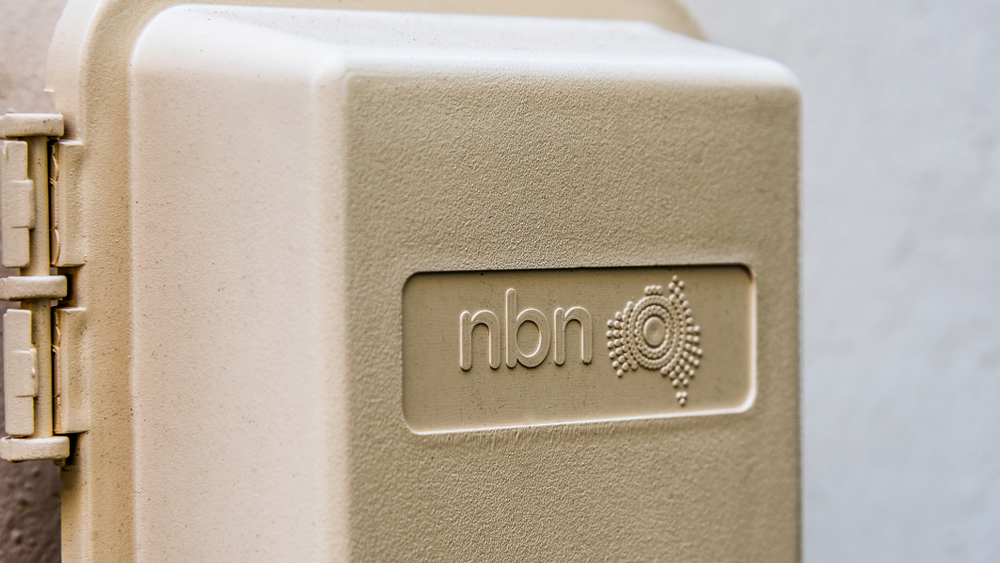
The nbn™ is a piece of national infrastructure developed to connect homes and businesses across Australia to high speed broadband.. There are different connection 'types' for nbn and depending on where you live or where your office is located, you might be on a different kind of connection compared to someone in another suburb or town..
FTTP (Fibre to the Premises) connects fibre directly to your premises, providing the fastest possible speeds. FTTN (Fibre to the Node) connects fibre to a nearby node, with copper wires covering the final distance, which can lead to slower speeds depending on proximity to the node.
It's useful to know the different kinds of connections that make up the nbn™, because these will affect things like the maximum speeds that you can expect, and might therefore determine the kind of Internet plan that you purchase from your ISP.
For the majority of Australians and businesses, the 'flavour' of nbn™ will be one of the three 'F's' - FTTP, FTTC and FTTN
FTTN is the most common connection type FTTN works by delivering a line of fibre for the bulk of the journey of the data, to a central location, known as a 'node'. From that location - typically located at the end of a street or located in the middle of a number of streets - the existing copper wire that was already installed to handle phone lines delivers the data the remaining distance to your modem/router.
This solution was envisioned to be the most cost-effective way of making the nbn™ a national service - the bulk of the journey would be handled by the premium, expensive-to-lay fibre, and then the existing, but less effective copper wires would save money for an inconsequential loss of speed over that last physical distance.
Depending on how far your premises is located from the node, however, the remaining copper distance might result in a significant drop in speed. For example, while you could get close to 100mbps speeds if your premises is located 300 metres from the node, at 1km away the maximum speed declines to around 30mbps. If you are located a fair way away from a node, then you won't benefit from a faster Internet plan.
Fibre-to-the-Curb (FTTC): With this connection type the fibre is run right up to the edge of the property, with copper delivering the remaining distance.The benefit of Fibre-to-the-Curb is that it all but guarantees that users will fall within the 300 metres of the edge of the fibre, while still saving the rollout costs of that last leg of delivery to the property. The downside is that it still caps the connection speeds at around 100mbps, so organisations or individuals that need the benefits of full fibre will still not be able to access those kinds of speeds.
Fibre-to-the-Premises (FTTP): For around 25 per cent of the population, FTTP offers the fastest possible speeds. It runs fibre right up to the location that it's being used, with no copper involved. FTTP is also different in that it requires special installation - an NBNco technician needs to come to install an external utility box and internal connection box. This requires drilling in the wall and the permanent installation of the box mounted onto a wall, so you'll need to check with the property owner or manager (if renting) before getting the box installed.
The benefits of a full fibre connection is that it can offer the fastest speeds
In addition to these three major nbn™ connection types, there are also some others, such as fixed wireless. This connection type is typically only for remote regions of Australia, with the bulk of people in cities or towns across Australia connecting via FTTP, FTTN or FTTC technology.
Many individuals or businesses would want access to FTTP. After all, it's only on FTTP that you can access 1000Mbps services, while those on FTTN can, at best, access 100Mbps. Unfortunately, it may not be an option. nbn™ services are determined by the technical infrastructure that is available to the area, and NBNco will not make additional unplanned installations.
The one exception is if the customer pays for the installation of FTTP themselves. This can be expensive, as you will need to cover the costs for the upgrade and installation of fibre wires and FTTP equipment, as well as foot the bill for any civil construction and project management involved.
Regardless of the type of nbn™ connection that you can access, the process remains the same and begins with a call to your ISP of choice. No one knows the nbn™ better than SpinTel, so reach out to a team member today to discuss the options available to you. SpinTel is able to help with whether FTTC, FTTP or FTTN is right for your Internet needs and can troubleshoot any issues that you might have with getting online.